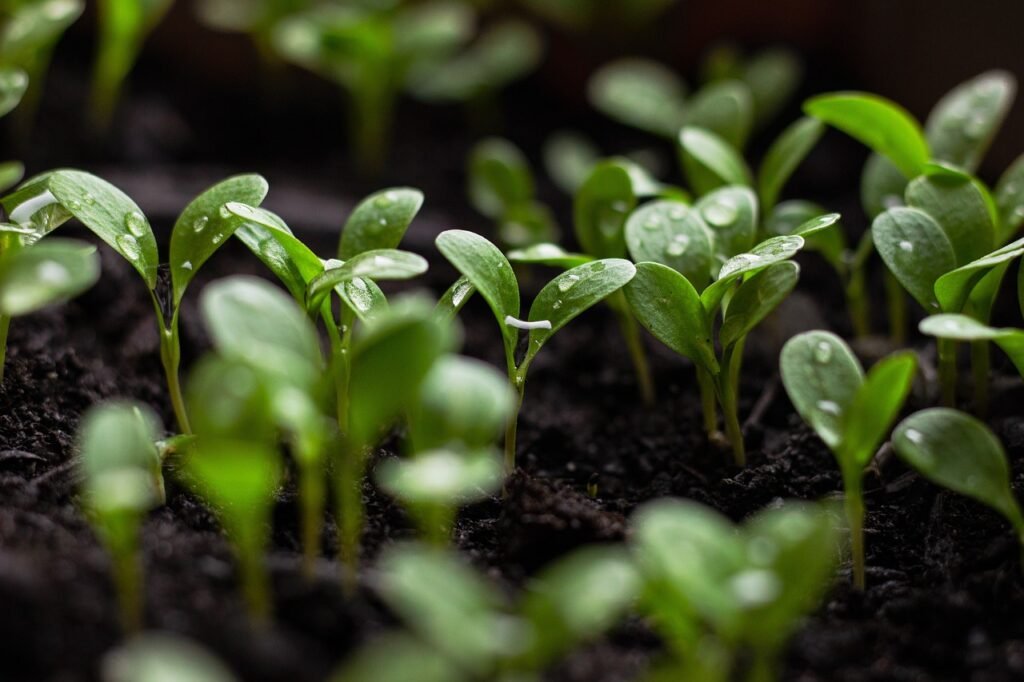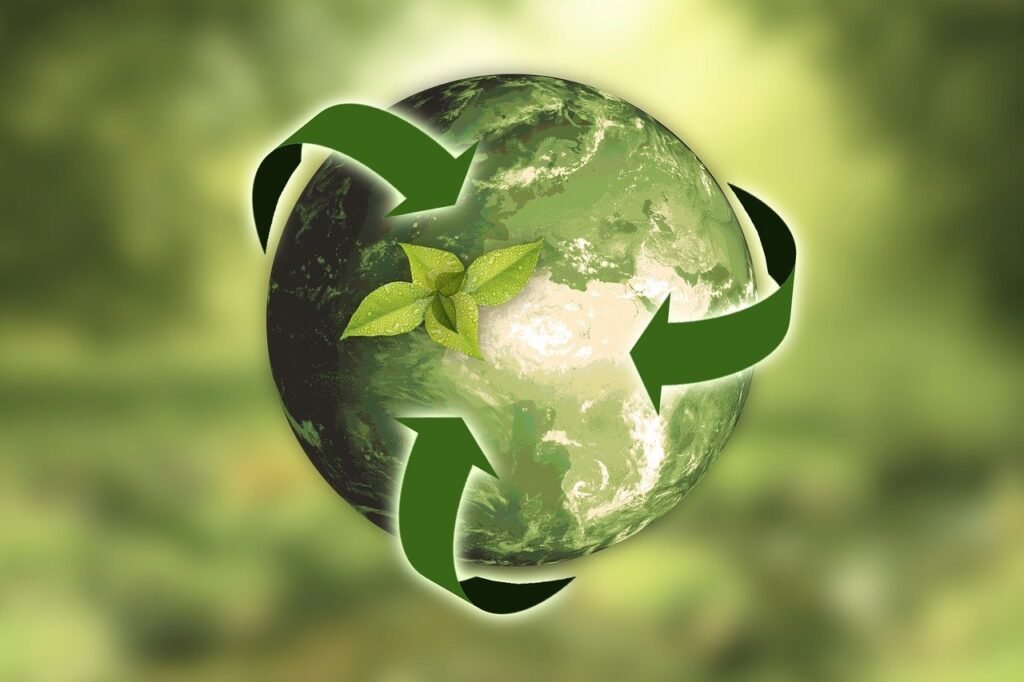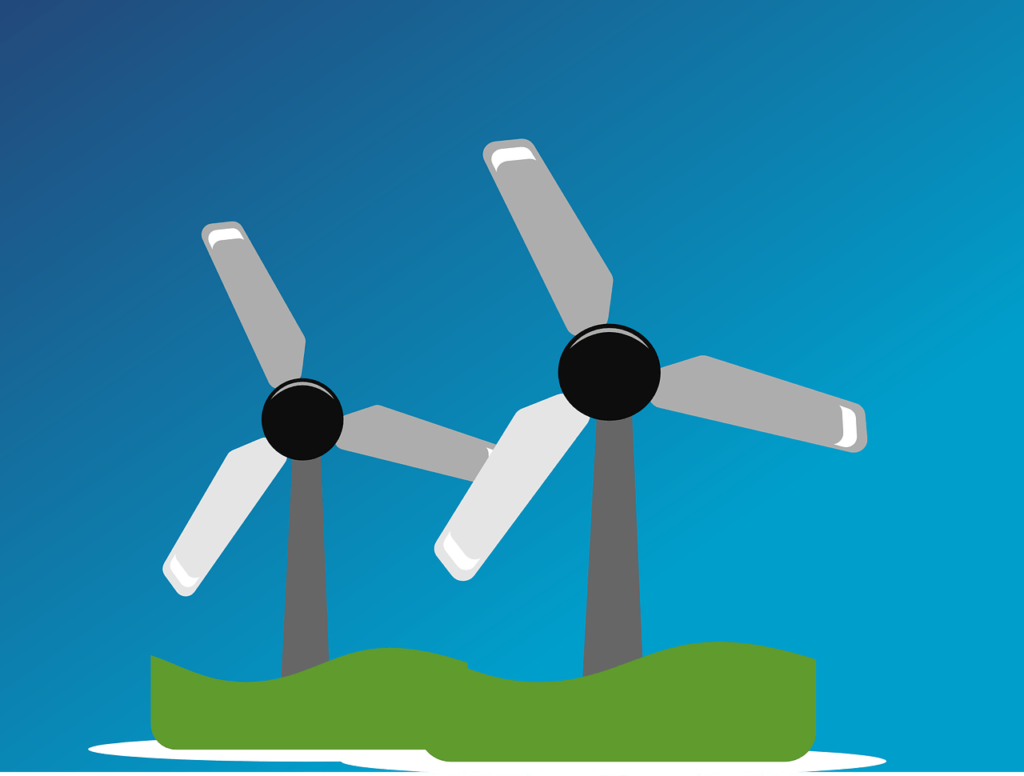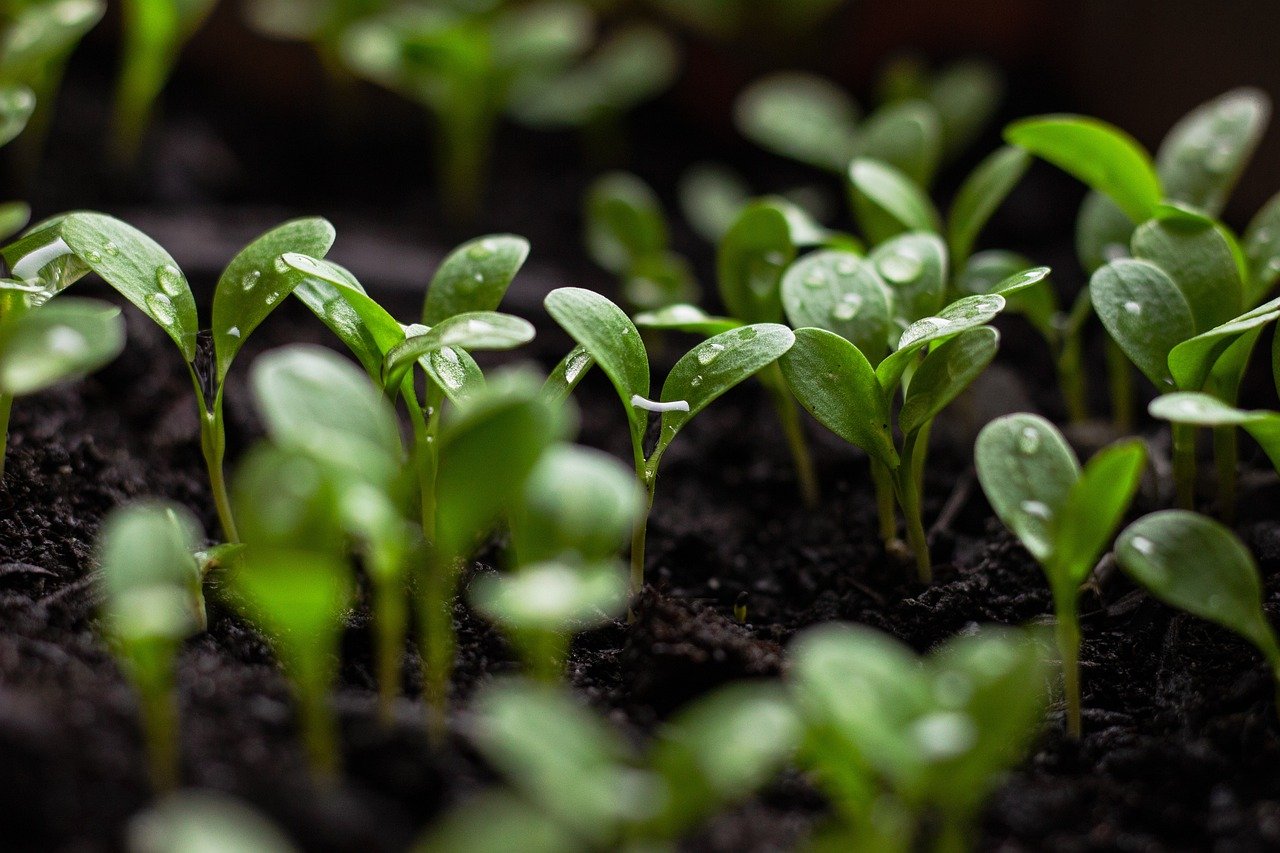Imagine being able to store your belongings in a way that is not only convenient but also environmentally conscious. That’s where sustainable solutions come into play, specifically through the use of eco-friendly plastic boxes. This article delves into the emerging trends in the world of eco-friendly and sustainable plastic boxes, exploring how they are revolutionizing the way we store and organize our belongings. From their durable construction to their recyclable nature, these boxes are paving the way for a greener future. Discover how these innovative solutions can help you reduce your carbon footprint while keeping your possessions safe and secure.

This image is property of pixabay.com.
Introduction to Eco-Friendly Plastic Boxes
Definition of eco-friendly plastic boxes
Eco-friendly plastic boxes are packaging solutions that are designed to minimize their environmental impact compared to traditional plastic packaging. They are made from recyclable or biodegradable materials and are manufactured using sustainable processes. These boxes are an important part of sustainable packaging solutions, as they aim to reduce waste generation, preserve natural resources, and lower carbon emissions.
Importance of eco-friendly packaging
Eco-friendly packaging plays a critical role in promoting sustainability and reducing the environmental impact of packaging materials. It helps to minimize waste generation, conserve resources, and reduce carbon emissions associated with traditional packaging. By choosing eco-friendly plastic boxes, businesses can showcase their commitment to environmental responsibility and meet the increasing demand from consumers for sustainable packaging options.
Growing demand for sustainable packaging solutions
In recent years, there has been a significant increase in the demand for sustainable packaging solutions, including eco-friendly plastic boxes. Consumers are increasingly aware of the environmental impact of packaging materials and are actively seeking alternatives that are more sustainable. This growing demand has prompted businesses to adopt eco-friendly packaging options in order to meet consumer preferences and demonstrate their commitment to sustainability.
Benefits of Eco-Friendly Plastic Boxes
Reduced environmental impact
One of the key benefits of eco-friendly plastic boxes is their reduced environmental impact compared to traditional plastic packaging. By using recyclable or biodegradable materials, these boxes help to minimize waste generation and reduce the amount of plastic that ends up in landfills or oceans. This significantly reduces the negative effects on the environment and promotes a more sustainable approach to packaging.
Recyclable and biodegradable materials
Eco-friendly plastic boxes are typically made from materials that can be recycled or are biodegradable. By choosing recyclable materials, these boxes can be diverted from landfills and used to produce new products, reducing the demand for virgin materials. Biodegradable materials, on the other hand, can break down naturally over time, minimizing their impact on the environment.
Lower carbon footprint
Eco-friendly plastic boxes contribute to a lower carbon footprint compared to traditional packaging. By using recyclable materials and sustainable manufacturing processes, these boxes reduce the amount of greenhouse gas emissions associated with their production and disposal. This helps businesses in their efforts to mitigate climate change and promote a more sustainable future.
Preservation of natural resources
By using eco-friendly plastic boxes, businesses can contribute to the preservation of natural resources. Sustainable materials and manufacturing processes help to reduce the extraction and consumption of limited resources, such as fossil fuels and natural gas. This ensures the long-term availability of these resources and reduces the environmental impact associated with their extraction and production.
Less waste generation
Eco-friendly plastic boxes are designed to generate less waste compared to traditional packaging options. Through the use of recyclable materials, businesses can ensure that these boxes can be reused or repurposed, minimizing waste disposal. Additionally, the adoption of biodegradable materials ensures that these boxes can break down naturally, further reducing waste and environmental impact.

This image is property of pixabay.com.
Types of Eco-Friendly Plastic Boxes
Bioplastics
Bioplastics are a type of eco-friendly plastic material that is derived from renewable resources, such as corn starch or sugarcane. These materials are designed to break down naturally over time, either through composting or in an industrial recycling facility. Bioplastic boxes offer an alternative to traditional plastic packaging, as they reduce the dependence on fossil fuels and have a lower carbon footprint.
Recycled plastic boxes
Recycled plastic boxes are another type of eco-friendly packaging solution. These boxes are made from post-consumer or post-industrial recycled plastics, which helps to divert waste from landfills and reduce the demand for virgin plastic. By using recycled plastic boxes, businesses can contribute to the circular economy and promote the reuse of materials to minimize environmental impact.
Reusable plastic containers
Reusable plastic containers are a sustainable alternative to single-use plastic packaging. These containers are designed to be durable and long-lasting, allowing them to be used multiple times before recycling. By choosing reusable plastic containers, businesses can significantly reduce the amount of packaging waste generated and minimize their environmental footprint.
Compostable packaging
Compostable packaging is made from materials that can be broken down and turned into compost. These materials are designed to break down naturally without leaving behind harmful residues. Compostable plastic boxes provide an eco-friendly alternative to traditional packaging materials, as they can be safely disposed of in composting facilities and contribute to the production of nutrient-rich compost for plants.
Sustainable Manufacturing Processes
Use of renewable energy
Sustainable manufacturing processes for eco-friendly plastic boxes involve the use of renewable energy sources, such as solar or wind power. By utilizing clean energy sources, businesses can significantly reduce their carbon emissions and decrease their environmental impact. This shift towards renewable energy helps to promote the transition to a greener and more sustainable future.
Efficient resource management
Efficient resource management is an important aspect of sustainable manufacturing processes for eco-friendly plastic boxes. By optimizing the use of materials, energy, and water, businesses can minimize waste generation and reduce their environmental footprint. This involves adopting practices such as waste reduction, recycling, and energy-efficient production methods.
Closed-loop systems
Closed-loop systems are an integral part of sustainable manufacturing processes for eco-friendly plastic boxes. These systems aim to minimize waste by reusing materials and resources within the production cycle. For example, plastic waste generated during the manufacturing process can be collected and recycled to produce new plastic boxes, closing the loop and reducing the need for virgin materials.
Reduced water consumption
Water conservation is a key factor in sustainable manufacturing processes for eco-friendly plastic boxes. By implementing water-saving technologies and practices, businesses can significantly reduce their water consumption and minimize the strain on local water resources. This helps to promote a more sustainable approach to production and manufacturing.
Adoption of eco-friendly practices
Sustainable manufacturing processes for eco-friendly plastic boxes also involve the adoption of eco-friendly practices throughout the production cycle. This can include the use of non-toxic and environmentally friendly materials, the implementation of energy-efficient machinery, and the proper management of waste and emissions. By adopting these practices, businesses can reduce their environmental impact and contribute to a more sustainable future.

This image is property of pixabay.com.
Applications of Eco-Friendly Plastic Boxes
Food packaging
Eco-friendly plastic boxes are widely used in the food packaging industry. These boxes provide a safe and hygienic packaging solution for a variety of food products, ranging from fresh produce to ready-to-eat meals. By using eco-friendly plastic boxes for food packaging, businesses can ensure the protection and preservation of food while minimizing their environmental impact.
Product storage and transportation
Eco-friendly plastic boxes are also commonly used for product storage and transportation. These boxes provide a durable and lightweight solution for safely storing and transporting various goods, such as electronics, cosmetics, and household items. By choosing eco-friendly plastic boxes for product storage and transportation, businesses can reduce their environmental footprint and ensure the safe delivery of their products.
Retail packaging
Retail packaging plays a crucial role in attracting customers and showcasing products. Eco-friendly plastic boxes offer a sustainable packaging solution for retail products, helping businesses to promote their commitment to sustainability and meet consumer demands for environmentally friendly options. These boxes can be customized to fit the branding and design requirements of different products, enhancing their visual appeal and marketability.
Shipping and logistics
Eco-friendly plastic boxes are widely used in shipping and logistics operations. These boxes provide a cost-effective and environmentally friendly solution for packaging and transporting goods. By using eco-friendly plastic boxes for shipping and logistics, businesses can minimize their environmental impact and contribute to the reduction of carbon emissions associated with transportation.
Eco-Friendly Plastic Box Design
Space-efficient and lightweight
Eco-friendly plastic boxes are designed to be space-efficient and lightweight. This allows for efficient use of storage space during transportation and warehousing, leading to reduced shipping costs and lower carbon emissions. Their lightweight design also makes them easier to handle and stack, improving efficiency and reducing the risk of injuries.
Stackable and nestable designs
Stackable and nestable designs are common features of eco-friendly plastic boxes. These designs allow the boxes to be nested or stacked on top of each other, maximizing storage space and enabling efficient use of warehouse or retail shelf space. By optimizing the use of space, businesses can reduce the need for additional packaging materials and minimize their environmental impact.
Innovative closure systems
Eco-friendly plastic boxes often incorporate innovative closure systems that provide secure and reliable sealing. These closure systems help to prevent product damage or spillage during storage and transportation, ensuring the integrity of the packaged goods. By utilizing innovative closure systems, businesses can enhance the functionality and convenience of eco-friendly plastic boxes, making them a preferred choice for various packaging needs.
Durable and long-lasting
Eco-friendly plastic boxes are designed to be durable and long-lasting. Their robust construction ensures that they can withstand the rigors of storage, transportation, and handling without compromising the integrity of the packaged goods. By choosing durable and long-lasting plastic boxes, businesses can reduce the need for frequent replacement, saving costs and minimizing waste generation.
Easy to clean and maintain
Eco-friendly plastic boxes are designed to be easy to clean and maintain. Their smooth surfaces and non-absorbent materials make them suitable for washing and sanitizing, ensuring hygiene and safety standards are met. Easy maintenance also prolongs the lifespan of the boxes, further reducing waste generation and promoting environmental sustainability.
Challenges and Limitations
Higher initial cost
One of the challenges associated with eco-friendly plastic boxes is their higher initial cost compared to traditional plastic packaging. The use of recyclable or biodegradable materials and sustainable manufacturing processes often requires additional investment, which can be a deterrent for some businesses. However, it is important to consider the long-term benefits and potential cost savings that can be achieved through reduced waste disposal and improved brand reputation.
Limited availability
Another limitation of eco-friendly plastic boxes is their limited availability compared to traditional plastic packaging options. While the demand for sustainable packaging solutions is increasing, the availability of eco-friendly plastic boxes may not yet be widespread or readily accessible in all regions. This can pose challenges for businesses looking to transition to sustainable packaging and may require further research and supplier sourcing.
Compatibility with existing systems
The compatibility of eco-friendly plastic boxes with existing systems and processes can be a challenge for businesses. Traditional packaging systems and distribution networks may not be designed to accommodate eco-friendly packaging solutions, requiring additional modifications or investments to ensure smooth integration. However, as the demand for sustainable packaging grows, more efforts are being made to align existing systems with eco-friendly options.
Consumer awareness and acceptance
Consumer awareness and acceptance of eco-friendly plastic boxes can be a limitation for businesses. While the demand for sustainable packaging is increasing, there may still be a lack of understanding or awareness among consumers about the benefits of eco-friendly packaging. Education and communication efforts are important to help consumers recognize the environmental significance of choosing eco-friendly plastic boxes and to motivate them to make sustainable choices.
Regulatory hurdles
Regulatory hurdles and compliance requirements can also pose challenges for the adoption of eco-friendly plastic boxes. Different regions and jurisdictions may have varying regulations and standards pertaining to packaging materials and waste management. Businesses may need to navigate these regulations and ensure that their packaging solutions meet the necessary requirements to avoid non-compliance and potential penalties.
Success Stories and Case Studies
Companies adopting eco-friendly plastic boxes
Several companies have successfully adopted eco-friendly plastic boxes as part of their sustainable packaging initiatives. For example, an international food and beverage company made the switch to compostable plastic boxes for their product packaging, reducing their environmental impact and meeting consumer demands for sustainable packaging options. Similarly, a leading e-commerce retailer implemented reusable plastic containers for their shipping and logistics operations, resulting in significant waste reduction and cost savings.
Positive environmental impact
The adoption of eco-friendly plastic boxes has led to positive environmental impacts in various industries. Through the use of recyclable materials and sustainable manufacturing processes, businesses have been able to reduce waste generation, conserve resources, and decrease their carbon emissions. These efforts contribute to overall environmental sustainability and promote a greener future.
Cost savings and efficiency improvements
Many businesses have experienced cost savings and efficiency improvements through the adoption of eco-friendly plastic boxes. By optimizing packaging design and using sustainable materials, companies have been able to reduce packaging waste, transportation costs, and storage requirements. Additionally, the extended lifespan of durable plastic boxes has helped businesses save on replacement and maintenance costs, resulting in long-term financial benefits.
Future Prospects and Innovations
Advancements in bioplastics
Advancements in bioplastics are expected to play a significant role in the future of eco-friendly plastic boxes. Ongoing research and development efforts are focused on improving the performance and properties of bioplastics, making them more suitable for a wider range of applications. Innovations in bioplastics could enhance their durability, elongate their shelf life, and broaden their compatibility with existing packaging systems.
Technological developments in recycling
Technological developments in recycling processes are expected to further enhance the sustainability of eco-friendly plastic boxes. Advanced recycling technologies, such as chemical recycling and mechanical recycling, offer the potential to convert plastic waste into high-quality recycled materials that can be used in the production of new plastic boxes. These developments could help to increase the availability of recycled plastic boxes and reduce the demand for virgin materials.
Integration of IoT and smart packaging
The integration of Internet of Things (IoT) technology and smart packaging holds great potential for the future of eco-friendly plastic boxes. IoT-enabled packaging can provide real-time data on product quality, condition, and location, helping businesses optimize their supply chain and reduce waste. Additionally, smart packaging can incorporate features such as temperature sensors or freshness indicators, ensuring the quality and safety of perishable goods.
Collaboration between industries
Collaboration between different industries is essential for driving innovation and improving the sustainability of eco-friendly plastic boxes. By working together, businesses can share knowledge, resources, and best practices, leading to more efficient and effective solutions. Collaboration between packaging manufacturers, material suppliers, and end-users can help overcome shared challenges and create a more sustainable packaging ecosystem.
Government initiatives and policies
Government initiatives and policies play a crucial role in shaping the future of eco-friendly plastic boxes. By implementing regulations and providing incentives for sustainable packaging, governments can encourage businesses to adopt more environmentally friendly practices. This can include measures such as tax incentives for the use of recycled materials, grants for research and development, and stricter regulations on single-use plastics.
Conclusion
Eco-friendly plastic boxes are an important part of sustainable packaging solutions. Their use can significantly reduce environmental impact by minimizing waste generation, preserving natural resources, and lowering carbon emissions. The benefits of eco-friendly plastic boxes, such as reduced environmental impact, recyclable materials, and efficient manufacturing processes, make them a preferred choice for businesses looking to promote sustainability and meet consumer demands for eco-friendly packaging options. As the demand for sustainable packaging continues to grow, it is important to continue researching and innovating in order to develop even more effective solutions. With collective action and collaboration between industries, a greener future can be achieved through the widespread adoption of eco-friendly plastic boxes.
